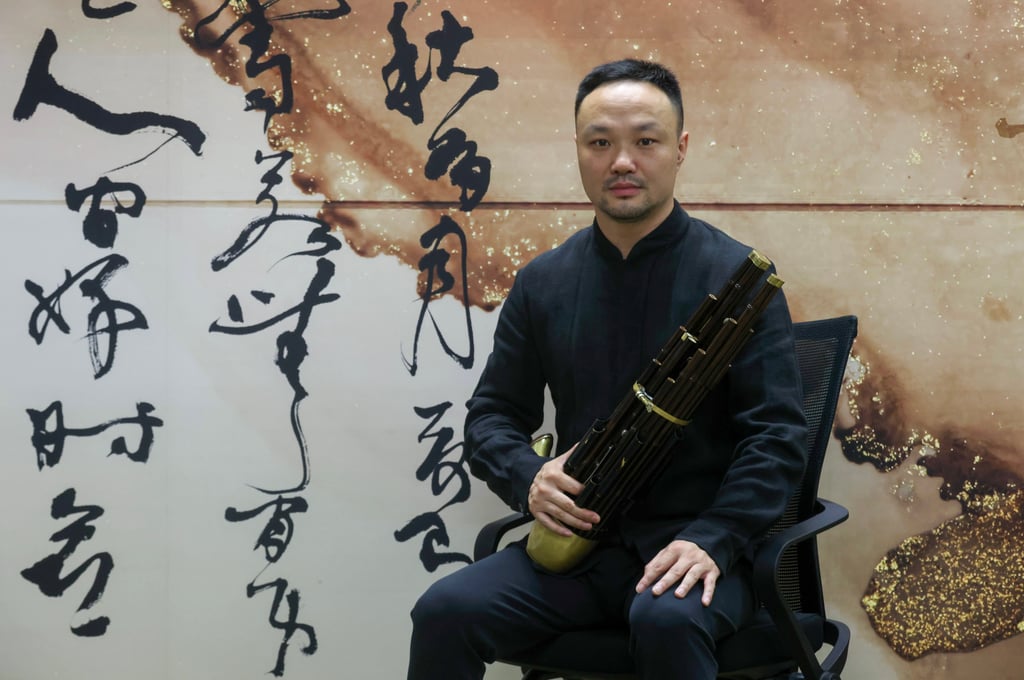To fully appreciate the richness of classical Chinese music, it helps to understand its history, which stretches back more than 8,000 years.

According to legend, the person responsible for the invention of Chinese music was the Yellow Emperor – whose other reputed accolades include unifying all the Chinese tribes along the Yellow River, writing the first Chinese characters and originating indispensable parts of traditional Chinese medicine.
One day the emperor asked a very clever scholar called Ling Lun to search for “harmonious sounds”, according to the classic text Master Lu’s Spring and Autumn Annals.
Ling Lun is said to have replicated the sound of the phoenix, a mythical bird, by carving holes into a piece of bamboo and blowing it – thus creating the first dizi, or Chinese flute. (It was not the earliest flute in the world – that record belongs to a Neanderthal flute discovered in Slovenia, southeast Europe, which was made out of bear bones 50,000 years ago.)
Myths aside, the earliest playable music instruments excavated in modern-day China were crane bone flutes found at an archaeological site in Jiahu, a Neolithic settlement near the Yellow River. Dating back to as long ago as 7500BC, they had five to eight holes and were capable of producing a near-perfect octave.
Over the centuries, other types of Chinese musical instruments emerged. By the Zhou dynasty (1046BC-256BC), instruments were categorised based on the primary material used in their fabrication.
There were eight categories: silk, bamboo, wood, stone, metal, clay, gourd and hide.

All the instruments used today – there are over 50 in a standard Chinese orchestra, such as the Hong Kong Chinese Orchestra – still fall under one of the eight categories.
The silk category covers all stringed instruments, including the erhu and pipa. The hide category covers drums. Gourd mainly includes the sheng, a wind instrument dating to 1100BC whose central chamber was traditionally made from gourd. Look out for our detailed explorations of each instrument category over the next few weeks.
An important musical concept was developed during the Zhou dynasty. Called yayue, it is a formal system of music and dance that was later absorbed into cultures across East Asia. In Japan, it is known as gagaku, and in Korea, aak.
Much classical Chinese music explores the interplay between the natural environment and human emotions. Among the most famous works are High Mountains and Flowing Water, originally played on a Chinese zither called the guqin, and Plum Blossom Melodies, best-known for its flute and guqin parts.
Chinese music is not typically based on the Western scale but a five-note pentatonic scale, made up of notes called gong, shang, jue, zhi and yu (equivalent to do, re, mi, sol and la in Western music). The system aligns with the five elements of Chinese cosmology: earth, metal, wood, fire and water. For example, gong is aligned with the earth element and has a deep pitch.

Music plays a major role in Confucian philosophy. As one of Confucianism’s “Six Arts”, music is considered a way for cultured individuals to express themselves, and is also emblematic of a stable government.
Not all viewed it so favourably, however. The ancient Chinese philosopher Mozi (circa 470BC-391BC) – who founded Mohism, an ancient Chinese belief system – strongly opposed music, seeing it as a form of excessive extravagance.
The evolution of Chinese instruments had a lot to do with trade with nearby cultures. Gongs, for example, are said to have originated from Tibet and what is now Myanmar the sixth century.
Fast-forward to the 1920s and 30s and a modernisation of Chinese music took place alongside the standardisation of regional versions of instruments and the systems for tuning, musical notation and more.
The Shanghai Conservatory of Music was established by scholar Cai Yuanpei in 1927 and was China’s first institution of higher learning devoted to musical education.
During this time, the modern Chinese orchestra was born, incorporating Western instruments and new Chinese instruments such as the gehu, which was adapted from the cello.

Four modern families of Chinese music instruments were formed based on how they were played: plucked strings, bowed strings, woodwinds and percussion.
In 1935, the Central Broadcasting System of China, later known as the Broadcasting Company of China (BCC), pioneered the professional four-section orchestra, also known as the guoyuetuan.
The BCC Orchestra provided the model for the many contemporary Chinese orchestras – including the Hong Kong Chinese Orchestra, which was founded in 1977.
Do not miss our exploration of the eight categories of Chinese musical instruments, which we will begin publishing on August 26.

